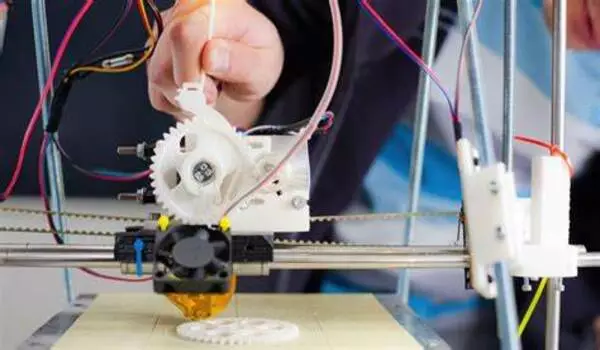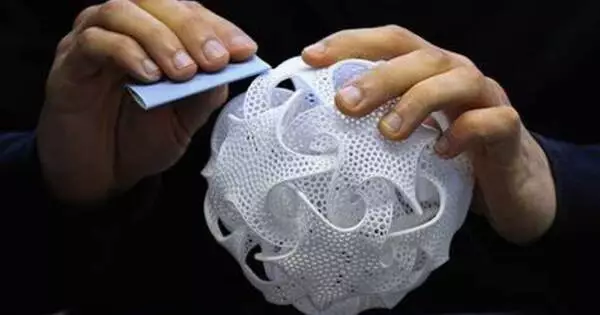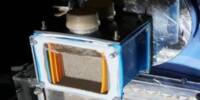Engineers have created a high-throughput, multi-material 3D inkjet printer that employs computer vision to manage the amount of material deposited during the printing process in real-time. This allows for the use of a diverse spectrum of materials in manufacture.
Engineers can use 3D inkjet printing methods to create hybrid structures combining soft and stiff components, such as robotic grippers that are strong enough to grasp large things but soft enough to interact safely with humans.
Thousands of nozzles are used in these multimaterial 3D printing systems to deposit tiny droplets of resin, which are smoothed using a scraper or roller and cured with UV light. However, the smoothing process may crush or smear slow-curing resins, restricting the materials that can be employed.
MIT, MIT spinoff Inkbit, and ETH Zurich researchers have developed a new 3D inkjet printing technology that works with a far broader spectrum of materials. Their printer uses computer vision to scan the 3D printing surface automatically and modify the amount of resin each nozzle deposits in real time to ensure no areas have too much or too little material.
This contactless technology works with materials that cure more slowly than acrylates, which are commonly employed in 3D printing since it does not require mechanical elements to smooth the resin. Some slower-curing material chemistries can outperform acrylates in terms of elasticity, durability, and lifetime.
Furthermore, the autonomous system makes modifications without halting or slowing down the printing process, allowing this production-grade printer to print around 660 times faster than a comparable 3D inkjet printing system.
Our key insight here was to develop a machine vision system and completely active feedback loop. This is almost like endowing a printer with a set of eyes and a brain, where the eyes observe what is being printed, and then the brain of the machine directs it as to what should be printed next.
Wojciech Matusik
The printer was used by the researchers to manufacture complicated robotic devices that blend soft and stiff materials. They created a fully 3D-printed robotic gripper structured like a human hand and operated by a system of strengthened, yet flexible, tendons, for example.
“Our key insight here was to develop a machine vision system and completely active feedback loop. This is almost like endowing a printer with a set of eyes and a brain, where the eyes observe what is being printed, and then the brain of the machine directs it as to what should be printed next,” says co-corresponding author Wojciech Matusik, a professor of electrical engineering and computer science at MIT who leads the Computational Design and Fabrication Group within the MIT Computer Science and Artificial Intelligence Laboratory (CSAIL).
He is joined on the paper by lead author Thomas Buchner, a doctoral student at ETH Zurich, co-corresponding author Robert Katzschmann, PhD ’18, assistant professor of robotics who leads the Soft Robotics Laboratory at ETH Zurich; as well as others at ETH Zurich and Inkbit. The research will appear in Nature.

Contact free
This work builds on the researchers’ 2015 introduction of the MultiFab low-cost multimaterial 3D printer. MultiFab enables high-resolution 3D printing with up to ten materials at once by using thousands of nozzles to deposit tiny droplets of UV-cured resin.
The researchers sought a contactless approach that would broaden the variety of materials they might use to create more complicated devices with this new effort. They invented vision-controlled jetting, which employs four high-frame-rate cameras and two lasers to fast and constantly scan the print surface. Images are captured when thousands of nozzles deposit small droplets of resin.
The image is converted into a high-resolution depth map by the computer vision system, which takes less than a second to complete. It compares the depth map to the CAD (computer-aided design) model of the item being manufactured and changes the amount of resin poured to keep the object on track with the final structure.
Any individual nozzle can be adjusted using the automated system. The system can regulate the details of the gadget being manufactured because the printer has 16,000 nozzles.
“From a geometric standpoint, it can print almost anything made of multiple materials. There are almost no restrictions on what you can send to the printer, and the results are truly functional and long-lasting,” explains Katzschmann.
The level of control afforded by the system enables it to print very precisely with wax, which is used as a support material to create cavities or intricate networks of channels inside an object. The wax is printed below the structure as the device is fabricated. After it is complete, the object is heated so the wax melts and drains out, leaving open channels throughout the object.
Because it can automatically and rapidly adjust the amount of material being deposited by each of the nozzles in real time, the system doesn’t need to drag a mechanical part across the print surface to keep it level. This enables the printer to use materials that cure more gradually, and would be smeared by a scraper.
Superior materials
The researchers used the system to print with thiol-based materials, which are slower-curing than the traditional acrylic materials used in 3D printing. However, thiol-based materials are more elastic and don’t break as easily as acrylates. They also tend to be more stable over a wider range of temperatures and don’t degrade as quickly when exposed to sunlight.
“These are very important properties when you want to fabricate robots or systems that need to interact with a real-world environment,” Katzschmann said.
The researchers used thiol-based materials and wax to create a number of sophisticated gadgets that would be practically impossible to create with current 3D printing techniques. They created a functional, tendon-driven robotic hand with 19 independently actuatable tendons, soft fingers with sensor pads, and solid, load-bearing bones, for example.
“We also produced a six-legged walking robot that can sense objects and grasp them, which was possible due to the system’s ability to create airtight interfaces of soft and rigid materials, as well as complex channels inside the structure,” Buchner said.
The team also demonstrated the technology with a heart-like pump with integrated ventricles and artificial heart valves, as well as metamaterials with non-linear material properties that can be programmed.
“This is only the beginning. There are an incredible amount of additional materials that can be added to this technique. This enables us to introduce entirely new material families that could not previously be employed in 3D printing,” Matusik explains.
The researchers are now considering using the technology to print with hydrogels, which are commonly used in tissue engineering, as well as silicon materials, epoxies, and particular forms of durable polymers. They also want to look into other areas of use, such as printing personalized medical equipment, semiconductor polishing pads, and even more complicated robots.
















